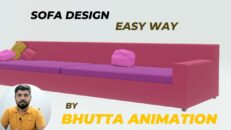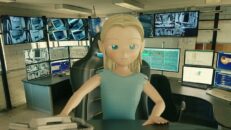In the dynamic world of digital design, the creation of helicopters through 3D modeling and animation stands as a testament to the blend of precision, artistry, and technological innovation. This intricate process transforms ideas into lifelike representations, pushing the boundaries of what’s possible in digital environments. Whether for video games, movies, virtual reality simulations, or educational purposes, the 3D modeling of objects, especially complex machines like helicopters, requires a deep understanding of both the subject matter and the tools of the trade. In this exploration, we dive into the fascinating process behind the 3D modeling and animation of helicopters, shedding light on the techniques, challenges, and incredible potential within this specialized field.
https://youtube.com/shorts/2ETQenam3y8?feature=share
Understanding 3D Modeling of Objects
3D modeling is the process of creating a mathematical representation of any three-dimensional surface of an object via specialized software. When it comes to helicopters, this involves not just the external shape but the intricate details that define them: the rotors, cockpit, landing gears, and even the interior mechanics. The accuracy of a model depends on a deep understanding of the helicopter’s design, requiring modelers to study blueprints, photographs, and, if available, the actual aircraft. Software like Blender, Maya, and 3DS Max are often used, offering a range of tools tailored for creating highly detailed and accurate models.
The Magic of 3D Animation
Once the model is created, the next step is to bring it to life through 3D animation. This is where static models transform into moving, functioning representations, capable of mimicking real-life helicopter behaviors. Animators work to simulate the physics of flight, considering how a helicopter maneuvers in the air, how its parts move in relation to each other, and how it interacts with its environment. Keyframe animation is a common technique, allowing animators to specify important positions (keyframes) while the software calculates intermediate frames, creating smooth motion. Simulations for rotor movements, vibrations, and even environmental interactions like wind and rain add layers of realism, immersing viewers in a convincingly real digital world.
Challenges in Helicopter 3D Modeling and Animation
The complexity of helicopters makes 3D modeling and animation a challenging endeavor. It requires a meticulous attention to detail, as every component, no matter how small, plays a role in the overall look and functionality of the helicopter. The animation of moving parts, especially the synchronization of rotor blades and the realistic depiction of aerodynamic principles, demands a high level of expertise and understanding of physics. Lighting and texturing also play critical roles in adding realism, requiring artists to simulate materials and surface properties under various environmental conditions.
The Impact of Realism in 3D Helicopter Models
Realistic 3D models and animations of helicopters serve numerous purposes. In the entertainment industry, they provide audiences with an immersive experience, whether in movies, video games, or simulation rides. For educational and training programs, they offer a risk-free way to familiarize students and professionals with helicopter operations and emergency procedures. In design and engineering, 3D models facilitate the exploration of new concepts and innovations, allowing for virtual tests and modifications before any physical model is built.
Conclusion
The 3D modeling and animation of helicopters are fields where art meets science. Through the use of advanced software and a deep understanding of both the machinery and the principles of animation, artists and engineers can create stunningly realistic and functional representations of helicopters. These digital creations not only captivate and educate audiences but also play a vital role in the design and development of new helicopter models. As technology advances, we can expect even more detailed and lifelike simulations, further blurring the line between digital and reality.
The journey of 3D modeling and animation is a perfect illustration of how technology can capture the complexity and beauty of the world, allowing us to explore and innovate in ways that were once beyond our imagination. Whether for entertainment, education, or engineering, the digital crafting of helicopters in three dimensions showcases the incredible potential of 3D modeling and animation to inspire, educate, and innovate.



